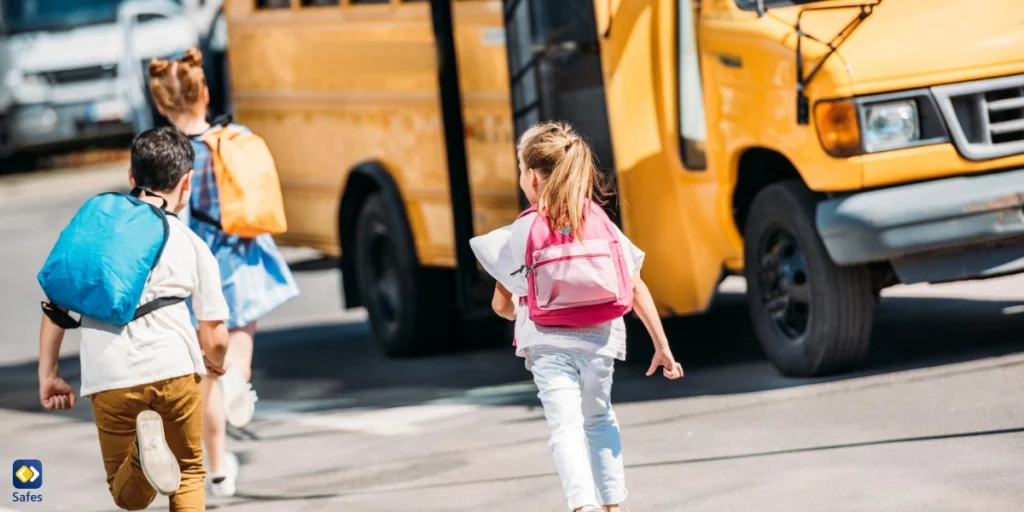With summer almost coming to an end, we are now approaching the school season. And as much fun as the long lazy days of summer have been, it’s now time for children to start getting ready to go back to school. However, this period of relaxation and fun might have made both children and their parents forget the necessary actions that they should take to make this experience safe and enjoyable. In the following sections, we’ll try to brush up on some of the most important back-to-school safety tips that students – and their parents, of course! – should be aware of before setting off to school.
Download and Start Your Free Trial of the Safes Parental Control App
A Comprehensive Guide to Back-To-School Safety
When we talk about our children’s safety, it seems like nothing we do might be enough. Every child’s situation and needs are unique. However, there are some key points that should certainly be considered if you want to keep your child secure at school. The following tips encompass both the emotional and physical safety of students.
Safe Routes and Transportation
It’s important for students to take safe routes and means of transportation to go to school or come back home. The National Center for Missing & Exploited Children (NCMEC) reports that most students get abducted on the way to or from school, most likely between 7-9 a.m. and 3-4 p.m. Decide on a route with your child before school starts and make sure that they won’t take any shortcuts. If your child walks to school, make sure that the route has sidewalks and crosswalks. If they take the bus, teach them to be seated when the bus is moving and follow the safety instructions. Don’t forget to teach them about traffic signals and pedestrian rules.
Stranger Danger Awareness
As a parent, you should teach your child to be cautious around strangers. Most kidnappers try to be kind and appealing at first to lure children. Some offer them something that they can’t resist. Explain to your children that there’s no need to engage in random conversations with people they don’t know, especially if they’re adults. Let them know that in the case someone tries to approach them in a suspicious way, they should leave the situation and contact a trusted adult immediately.
Cyber Safety
The importance of cyber safety cannot be overstated in this day and time. Nowadays, a lot of child predators who used to roam the streets in search of a victim have migrated to the internet. Online safety is a subject that should be promoted by both parents and schools. Safety rules, such as not sharing passwords, personal information, or photos with strangers, should be discussed with students. Of course, using parental control apps can be an effective way to monitor students’ online activities and ensure responsible online behavior.
Backpack Safety
A lot of students might choose a backpack that looks the coolest, but it’s highly important to choose one that fits well and also to wear it right. Wearing a backpack incorrectly can gradually cause back and shoulder pain and affect children’s posture. Verywell fit recommends that a backpack should be not too big or too small, not slung over one shoulder, and not too low on the back. It should also weigh no more than 10% of their bodyweight.
Bullying Prevention
Bullying has been an ongoing problem in schools, with cyberbullying being recently added to this issue. First, you should inquire about the ways your child’s school intends to raise awareness of and prevent bullying. Next, you should teach your child to speak up if they witness another student being bullied or tell a trusted adult if they’re the target of bullying themselves. Remember that it can be hard for a child to confess that they’re being bullied. With the right monitoring and open communication, parents can get an insight into their children’s problems.
Health Precautions
As the weather gets colder, flu and cold become more widespread. It’s important to teach your child about coughing/sneezing etiquette and to wash their hands regularly, especially before eating and after using the restroom. If your child brings lunch from home, they should store it in a cool environment to avoid spoilage. Also, make sure that your child is having a nutritious and balanced diet, comprised of main meals and healthy snacks.
Emergency Contacts and Information
We all have our own emergency contacts, and children should be no exception to the rule. Provide a list of trusted adults that can help in case of an emergency. Try to include at least three people on the list, since sometimes the primary emergency contact may not be available. Make your child save the information on their phone and put a copy in their backpack. It would also be a good idea to keep the school updated on the information so that they know who to contact if needed.
Conclusion
Sending children back to school can evoke a series of feelings in parents. A lot of them may feel worried about their children being away from them for a considerable part of the day and feel that they’ll be exposed to danger. However, the truth is that school is a positive and important experience in children’s lives, promoting skills that will help shape their future. What parents can and should do is to make it a safe experience for them. By implementing the above tips into your parenting, you can minimize the threats and ensure their safety at school.




